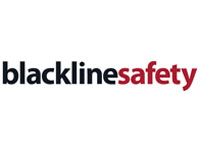As working from home and hybrid working become more commonplace, the number of lone workers – namely those who work out of sight and sound of others – is on the rise. Studies show that nearly half (44%) of lone workers report feeling unsafe at work and 20% of those say they have struggled to get help after an incident. In a 2023 report, 75% of employees, including lone workers, state their employers’ safety efforts are not very effective, 71% don’t think employers are following through on safety promises, and 64% believe their employers are not actively improving safety training.
In addition, lone workers can now be found across industries not traditionally associated with people working alone. This means that many more employers need to consider putting a robust safety
programme in place to protect this vulnerable and growing cohort. In a series of articles, Shreesh Nadgouda, Region Sales Manager for Blackline Safety, India and South Asia will offer some hints and tips to help you build out your programme.
Identify the lone workers in your business and the risks they face.
The first step towards protecting lone workers is to understand who they are and what risks they are facing. These can be risks to mental health and well being from working in isolation – as well as the physical risks that can accompany workers in remote locations, those travelling between worksites, or those who may come into contact with hazards such as toxic or explosive gases. Other common risks to lone workers include slips, trips and falls; electrocution; accidents with equipment or vehicles; falling ill suddenly and even hazards posed by the weather.

For more information,
blacklinesafety.com


